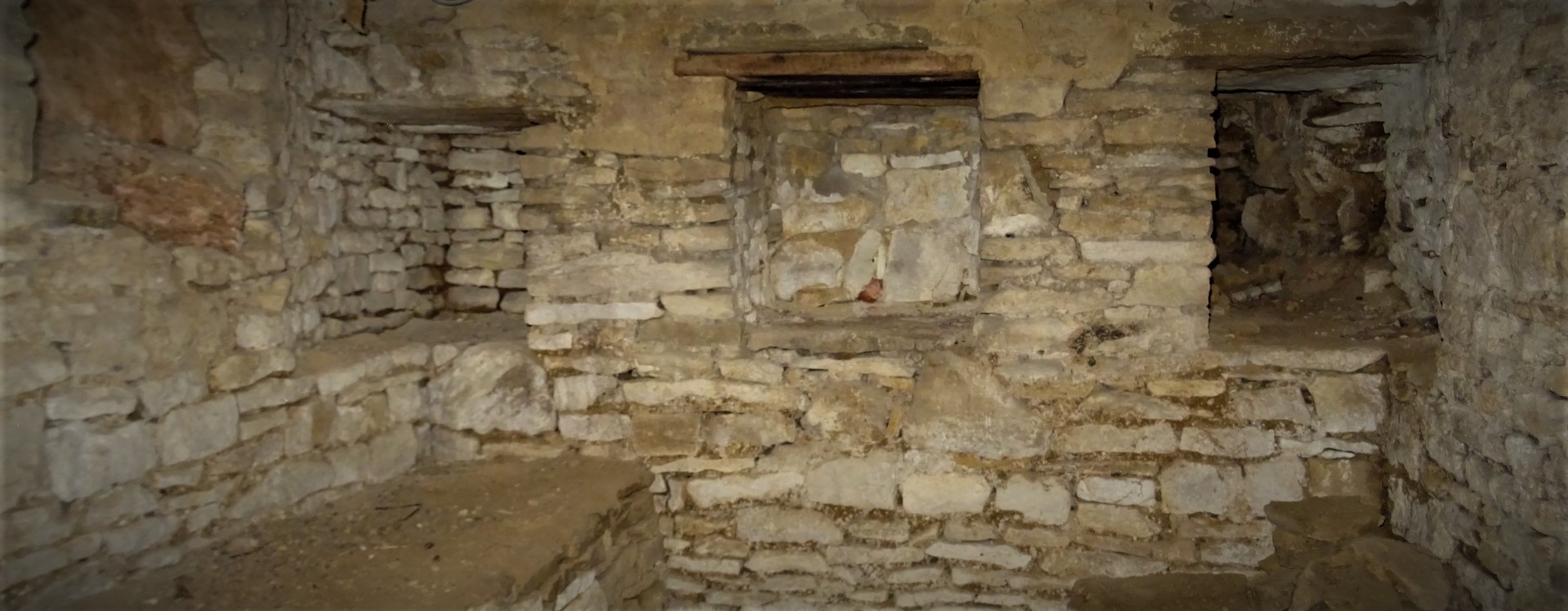Our Oxford building surveyor was surprised to find a large cellar crammed with historic features below a Chipping Norton cottage.
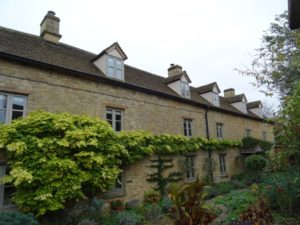
This beautiful North Oxfordshire home started life as a humble row of cottages, possibly dating from the 17th century, which have since been converted to a single dwelling.
The property has a grade II listing, which, according to its listing, it was given mainly because of how close it is to the 12th century church across the road.
Despite the relatively modest listing on Historic England, our building surveyor discovered some intriguing features in the cellar suggesting a colourful history.
The cellar inspection threw up clues, and questions, as to the property’s past. The cellar ran under the entire property and consisted of narrow passages and larger rooms. The presence of alcoves indicated medieval development. Intriguingly, at one location the cellar opened up into a double room with benching along one side and a series of niches to the walls; a finding which raised more questions than answers.
Using his expertise as a member of the Institute of Historic Building Conservation, our building surveyor began a process of deduction, excluding the unlikely and impossible, until he could make sense of the evidence.
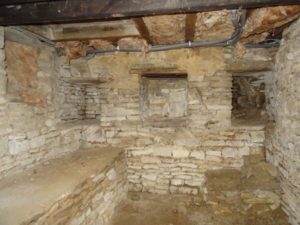
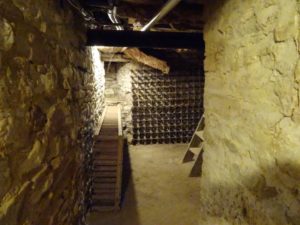
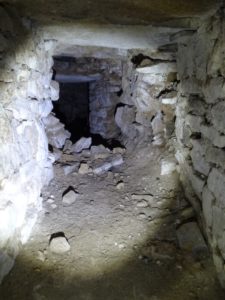
The benches and wall niches seemed consisted with a large monastic house cellar with a buttery or pantry. However, there are no records of any money being collected by a priory church or monastic house, and instead there was a well documented living paid to the rector of the adjoining church, who was housed nearby. Therefore, this first possibility seems unlikely.
Similarly, the lack of any known manor house at this site, whilst not definitively disproving any such building, renders any secular cellar with buttery or pantry similarly unlikely.
What appears more likely, and possibly of greatest excitement, is the possibility of a concealed recusant chapel, beneath the floorboards of the house. Recusants were people who practised the Catholic faith and refused to attend Anglican church services, during a period of Catholic persecution between the 16th & 18th Centuries. Anyone still loyal to the Catholic church at this time risked torture and death for their faith. A series of concealed chapels were developed in many homes and buildings around the country, mainly between the 1550s and the Catholic Gunpowder Plot, which was foiled in 1605. These allowed recusants to continue to practice their faith in secret.
There are several well documented clusters known historically, both locally and within the county, though none documented at this property. The niches we found would be well-suited to the storage of vestments, relics, and the fitments of religious service, and the benching similarly seems appropriate for seating those observing their religious beliefs.
Intriguingly, one particular niche continued through the wall behind, forming a tunnel into an adjoining cellar. We speculated that this was a former priest hole. Priest holes were hiding places that were commonly constructed leading off recusant chapels. They allowed a priest to escape and evade capture if a property was raided. They were, however, were notoriously tiny, with no room to move around and scarce access to food and drink. The size of the opening certainly does not suggest any degree of comfort.
We also learned that in 1555, the property was included as part of an endowment for the support of the newly-founded St John the Baptist College in Oxford College. St John the Baptist was a popular historic Catholic patronage; this finding could, therefore, indicate Catholic owners in the mid–late 16th century.
Much needs to be done to research the property further, and to provide definitive answers as to the origins and evolution of the building, its use, and its place in our social history. For now, the building survey provides a fascinating insight into the possible development of the building, and raises the prospect of further interesting findings for the next person to take on the study of this remarkable yet unpretentious property.

